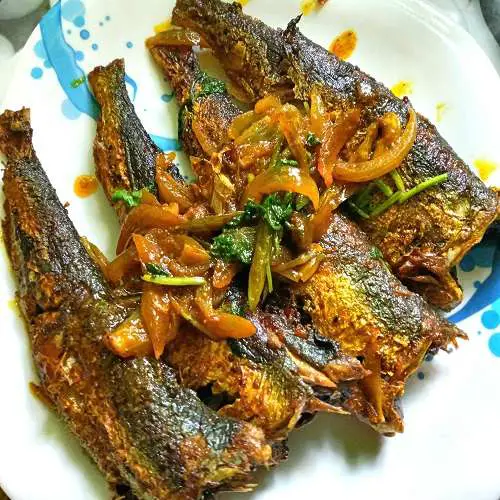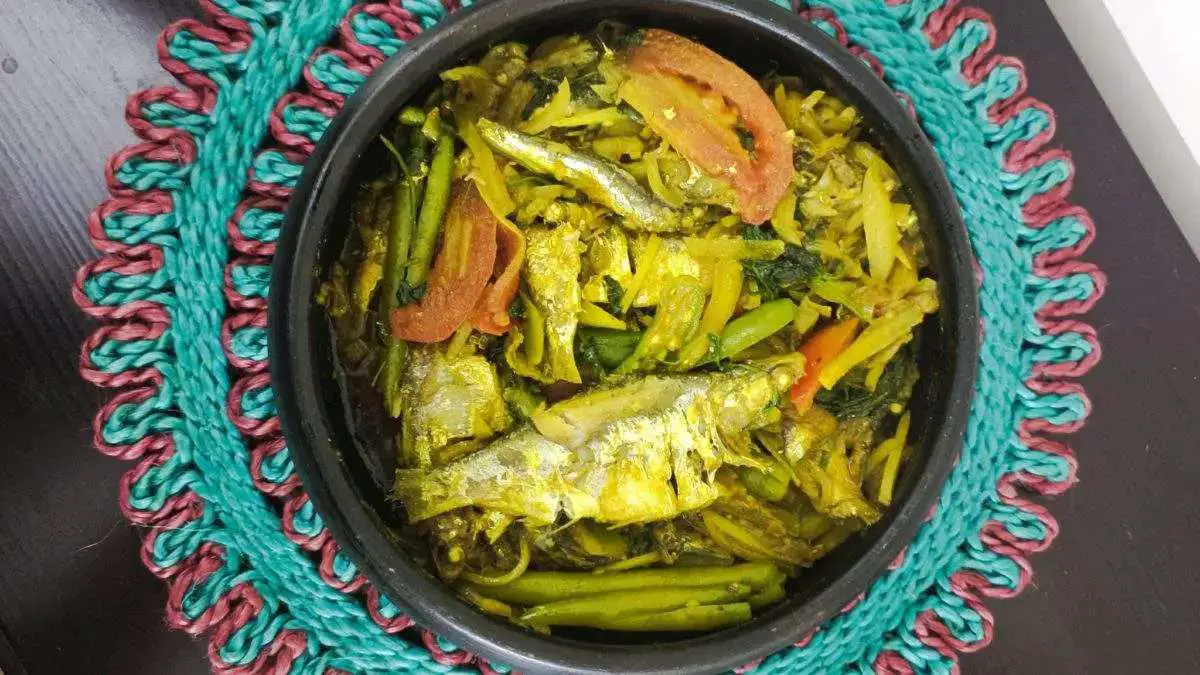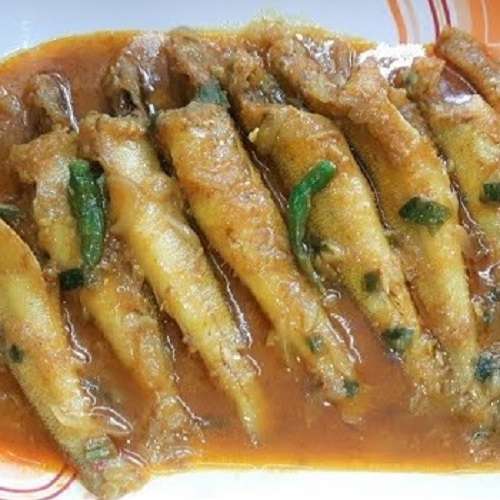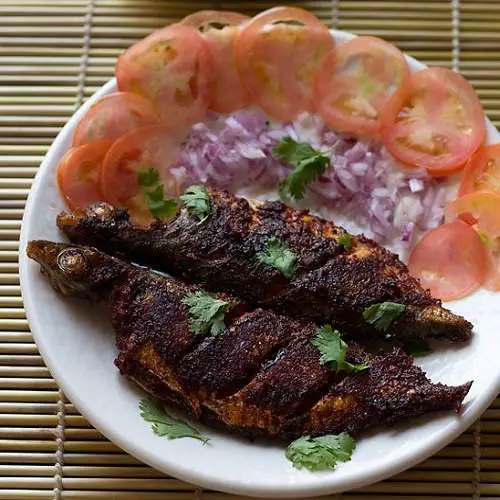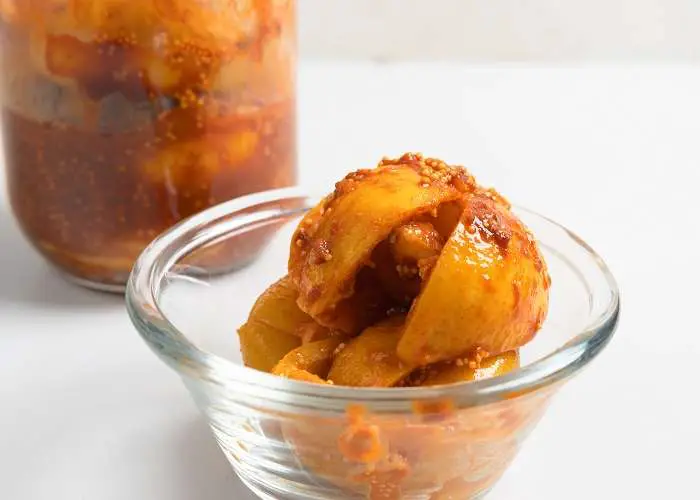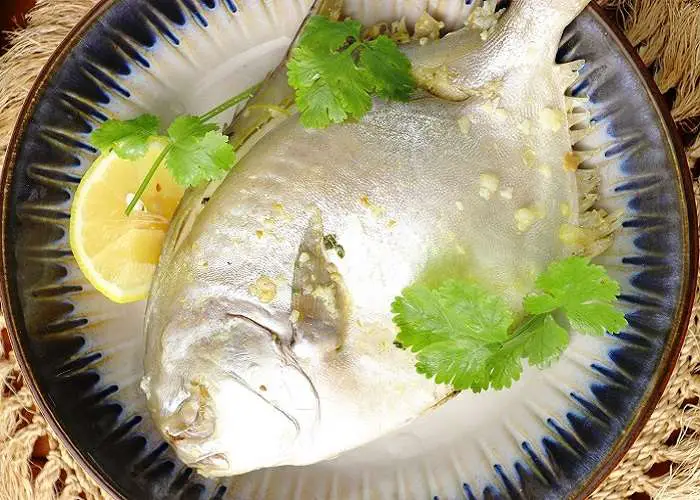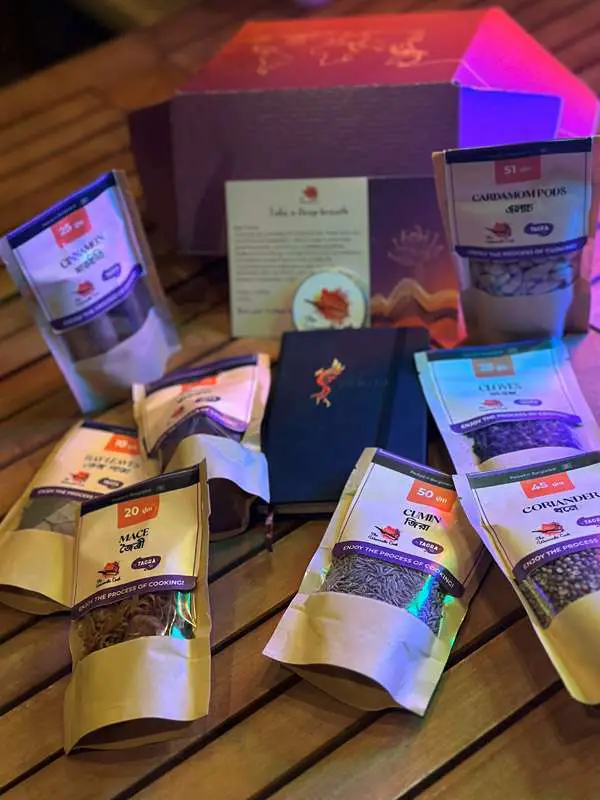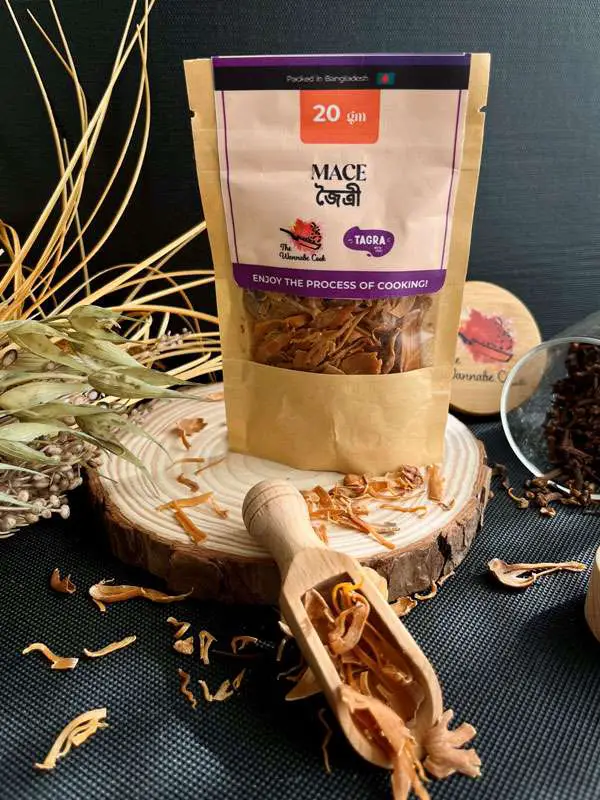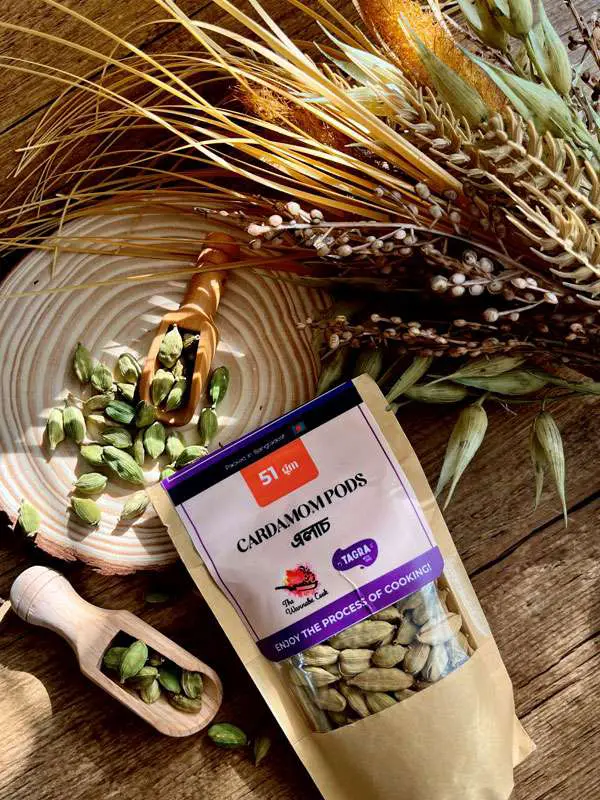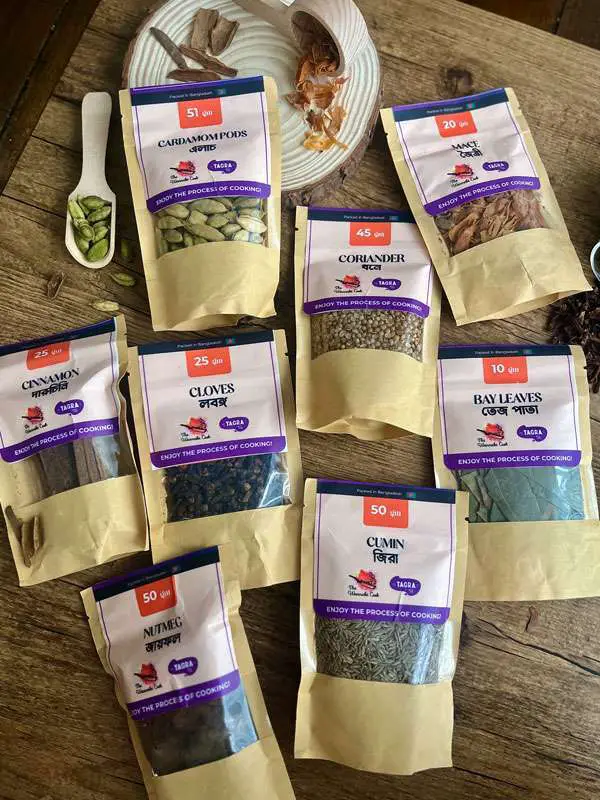Chapila Fish
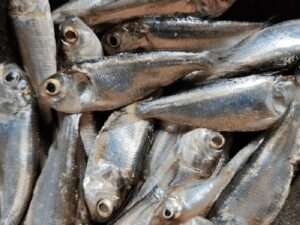 Chapila is a small freshwater fish very commonly available in Bangladesh. It is a popular fish because of its taste and easy availability. When I was a child I often used to confuse chapila fish with jatka (baby hilsha fish) as they look very similar. They also smell and taste quite the same. However now as an adult I can tell the subtle and yet significant difference in them. I must say if I had to compare baby hilsha fish to chapila I would certainly pick the later one due to its unique flavor and ease of preparation. Chapila has a delicate, mild taste that absorbs spices well, making it ideal for frying or light curries.
Chapila is a small freshwater fish very commonly available in Bangladesh. It is a popular fish because of its taste and easy availability. When I was a child I often used to confuse chapila fish with jatka (baby hilsha fish) as they look very similar. They also smell and taste quite the same. However now as an adult I can tell the subtle and yet significant difference in them. I must say if I had to compare baby hilsha fish to chapila I would certainly pick the later one due to its unique flavor and ease of preparation. Chapila has a delicate, mild taste that absorbs spices well, making it ideal for frying or light curries.
Chapila is widely available in Bangladesh and other South Asian countries, making it an affordable source of essential nutrients for low-income families. As a small fish, Chapila generally requires less intensive fishing methods, reducing environmental impact compared to larger fish. This makes it a more sustainable option for those looking to include seafood in their diets with a lower ecological footprint.
Identifying Chapila Fish
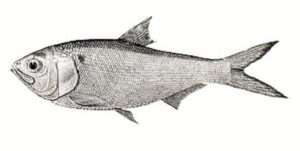 The Chapella is a silvery fish with a dark shoulder and back, reaching a maximum body length of 20 cm. It has a wide mouth, teeth, and an elongated tail. It has a sharp abdominal profile, short Dorsal and Pelvic fins, and a long Anal fin. The fish has 26 to 29 scutes along its belly and a single triangular pectoral axillary scale. It feeds mainly on plankton and is found in various water bodies in Bangladesh. It can be easily cultured in confined waters and breeds twice a year, with the peak breeding season occurring between June and July.
The Chapella is a silvery fish with a dark shoulder and back, reaching a maximum body length of 20 cm. It has a wide mouth, teeth, and an elongated tail. It has a sharp abdominal profile, short Dorsal and Pelvic fins, and a long Anal fin. The fish has 26 to 29 scutes along its belly and a single triangular pectoral axillary scale. It feeds mainly on plankton and is found in various water bodies in Bangladesh. It can be easily cultured in confined waters and breeds twice a year, with the peak breeding season occurring between June and July.
Nutritional Value per 100g of Chapila
Including Chapila in your diet can help bridge nutritional gaps, providing essential vitamins and minerals without the need for costly supplements. Here is a nutritional content of Chapila fish per 100g (approximate):
- Protein: 13.9%
- Lipid (Fat): 4.79%
- Ash (Minerals): 4.5%
- Calcium: 1.43% (dry matter basis)
- Phosphorus: 2.39% (dry matter basis)
- Energy Content: 5.18 KJ/g
Health Benefits of Consuming Chapila
Regular consumption of Chapila fish (Gudusia chapra) offers numerous health benefits, particularly for individuals in regions where nutritional deficiencies are common. This small fish is rich in high-quality proteins, essential fats, minerals, and vitamins, making it an excellent dietary choice. Here’s a detailed look at the benefits:
- Muscle Growth and Repair
Chapila fish is a good source of protein, which is essential for muscle growth, repair, and overall bodily functions. Eating chapila fish regularly can help you to maintain muscle mass. This can be especially beneficial for children, the elderly, and any other person with increased protein needs.
- Rich in Essential Fatty Acids
Chapila contains some healthy fats, including omega-3 fatty acids. Although the amount can be considered moderate compared to larger marine fishes, however if we consider the price range of chapila, it is a cheaper option to get those healthy fats. Omega-3s are known to support cardiovascular health by reducing blood pressure, lowering triglycerides, and decreasing the risk of heart disease. Regular intake of omega-3-rich fish like Chapila can also benefit brain function and may reduce inflammation in the body.
- Bone Health
As chapila is a comparatively smaller fish it is often eaten whole, including the bones. Chapila is thus a valuable source of bioavailable calcium. This calcium is easily absorbed by the body. It supports bone health and reduces the risk of osteoporosis. The chapila fish can become a necessary alternative for calcium to people who have limited access to dairy products.
- Energy and Bone Strength
Chapila has a good portion of phosphorus, which is necessary for both producing energy and the growth of bones and teeth. It complements calcium to strengthen bones. It is also essential for cellular growth and repair.
- Heart Health
Chapila is a heart-healthy option because of its moderate amount of calories and low fat level, along with its omega-3 content. Frequent consumption of chapila, especially in adults and older people, can help control cholesterol levels, which is essential for preventing heart disease.
- Immunity Boost
Chapila fish is high in minerals like zinc. Zinc promotes immune cell formation and function and it assists the body in fighting off infections. It has also been linked to improved immunological function.
- Cognitive Health
Fatty acids such as Omega-3 are crucial for brain development and function. Regular consumption is beneficial for cognitive health and it can lower the risk of cognitive decline in older adults. Chapila, like most other fishes, contains a portion of such healthy fats and contributes to brain health.
- Eye Health
Smaller fish like chapila contain vitamin A or vitamin A precursors. These vitamins are essential for eye health. Adding chapila fish to your regular diet can benefit your eyes, particularly the children: it can also help to prevent night blindness and other vision issues associated with vitamin A deficiency.
Traditional Bengali Recipes with Chapila Fish
Chapila Fish Curry
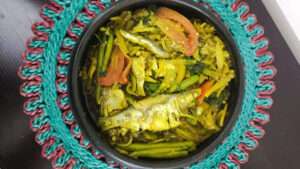 Chapila fish curry is a very easy to cook and wholesome bengali dish made with the small and yet amazingly flavorful chapila fish. This recipe combines chapila fish with fresh seasonal vegetables like potatoes, aubergines, and tomatoes making it a very healthy fish curry. First clean and wash the chapila fish. Now chop all the vegetables, and onions. In a bowl mix the fish and vegetables with mustard oil, turmeric, red chili powder, and salt. Heat a pan and cook the mixture over medium heat for 20-25 minutes. Add green chili and coriander for extra flavor, and cook a few more minutes until the dish is ready. Serve this nutritious, protein-rich curry with hot, steamed rice.
Chapila fish curry is a very easy to cook and wholesome bengali dish made with the small and yet amazingly flavorful chapila fish. This recipe combines chapila fish with fresh seasonal vegetables like potatoes, aubergines, and tomatoes making it a very healthy fish curry. First clean and wash the chapila fish. Now chop all the vegetables, and onions. In a bowl mix the fish and vegetables with mustard oil, turmeric, red chili powder, and salt. Heat a pan and cook the mixture over medium heat for 20-25 minutes. Add green chili and coriander for extra flavor, and cook a few more minutes until the dish is ready. Serve this nutritious, protein-rich curry with hot, steamed rice.
Learn more about Chapila Fish Curry
Grilled Chapila Fish
 Grilled chapila fish is a quick, easy and delicious recipe.
Grilled chapila fish is a quick, easy and delicious recipe.
- To prepare this delicious dish start by cleaning 1 kg of fish and season it with turmeric and salt and set aside to marinate.
- In a pan, heat 8 tablespoons of soybean oil and fry the fish over medium heat until golden and put aside.
- Now, in a separate pan, heat 4 more tablespoons of oil, add chopped onions and green chilies, and sauté until the onions turn light brown.
- Add red chili powder, turmeric, cumin-coriander powder, and salt.
- Stir well, then add water to blend the spices.
- Once the mixture thickens and oil comes up add the fried fish, mixing it gently with the spices.
- Cook for 10 more minutes, sprinkle some chopped coriander (optional), and serve hot with rice.
Chapila Fish Fry
 Chapila fish fry is another quick and easy way to enjoy this uniquely delicious fish. This is not much of a difficult recipe, but sort of a shortcut way to get your fish fry fix.
Chapila fish fry is another quick and easy way to enjoy this uniquely delicious fish. This is not much of a difficult recipe, but sort of a shortcut way to get your fish fry fix.
- Start by cleaning the fish well and washing it, and then pat dry the fish.
- Next, rub the dry spices onto the fish: turmeric powder, red chili powder, and season with salt.
- Let the fish marinate for 10 to 15 minutes.
- Now, in a pan, heat sunflower oil (or mustard oil).
- Fry the fish until golden.
- The next step is optional but will surely enhance your whole mach bhaja (fried fish) experience. In the same oil where you fried the fish, fry some chopped onions until they are golden brown and fry some dried red chilies until they are crispy.
- Serve them all together with a side of rice and enjoy!
Latest Recipe:
Follow Us:

